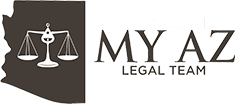How to File Bankruptcy in Arizona and Where to Do It
Have you found yourself faced with debts that you are unable to pay in Arizona? Are you contemplating filing for bankruptcy in Arizona? If so, you might wonder where you file for bankruptcy in Arizona. Arizona has its own requirements for Chapter 7 bankruptcy, which we will explore in depth here.
Where Do I File for Bankruptcy in Arizona?
The United States Bankruptcy Court has one District of Arizona. However, depending upon where you live, you will file Chapter 7 bankruptcy in different places. If you live in the counties of Apache, Maricopa, Gila, Yavapei, Coconino or Navajo, you must file in the Phoenix Division. If you live in the counties of Pima, Graham, Cochise, Pinal, Greenlee or Santa Cruz, you must file in the Tucson Division. If you live in Yuma, Mohave or La Paz counties, you must file in the Yuma Division.
You need not have a bankruptcy attorney in order to file Chapter 7 bankruptcy in Arizona. However, having a bankruptcy attorney can make the process go much more smoothly for you. An Arizona bankruptcy attorney knows the ins and outs of the state’s bankruptcy law, including requirements and exemptions, and can help you to achieve the best outcome in your bankruptcy case.
What Documents Should I Gather in Preparation for Filing for Bankruptcy in Arizona?
Whether you are filing Chapter 7 bankruptcy on your own or with the help of an Arizona bankruptcy attorney, you should request free credit reports from each of the three major credit reporting agencies. You should also add any creditors or debt collectors not listed on the reports to a list. Pull your federal income tax returns from the past two years as well as paycheck stubs, bank statements for all of your accounts, and any divorce decrees from the past 10 years.
What Other Requirements Must I Meet to File for Bankruptcy in Arizona?
Federal law requires that everyone who files for bankruptcy in any state takes a credit counseling course before submitting a bankruptcy petition to the United States Bankruptcy Court. The course must be taken from an approved provider, which may be found on this list provided by the US Bankruptcy Court.
As of September 2021, all approved providers in Arizona are only offering the course online, not in-person. Some providers offer the course in Spanish as well. The course takes no more than two hours to complete. Once completed, the certificate of completion you receive is valid for 180 days.
What Forms and Fees Do I Need to File for Bankruptcy in Arizona?
If you are using a bankruptcy attorney in Arizona, they will prepare your bankruptcy forms for you and meet with you to go over everything before filing. If you are filing your own Chapter 7 bankruptcy, you will need to fill out national and local forms. They can be downloaded here online for free from the District of Arizona U.S. Bankruptcy Court.
As of September 2021, the fee to file Chapter 7 bankruptcy in Arizona is $338. This is payable via money order or cashier’s check only to Clerk, U.S. Bankruptcy Court. A down payment of $80 is accepted by the Court if you can’t pay the entire fee all at once, as long as you file an application to pay the remainder of the fee in monthly installments.
If you have retained an Arizona bankruptcy lawyer, they must file the required attorney fee disclosure with your bankruptcy forms. Your application will not be considered by the Bankruptcy Court without this form being filed.
Must I Take a Second Bankruptcy Course in Arizona?
Before your bankruptcy will be discharged by the Court, you must take a second bankruptcy course. This must be given by one of these approved debtor education agencies.
What is the 341 Meeting of Creditors in Arizona?
Finally, you must attend a meeting of creditors, called a 341 Meeting, so that your Chapter 7 bankruptcy case can be discharged. At this meeting, you must answer questions under oath. Your creditors may attend to ask questions, but this does not always occur.




